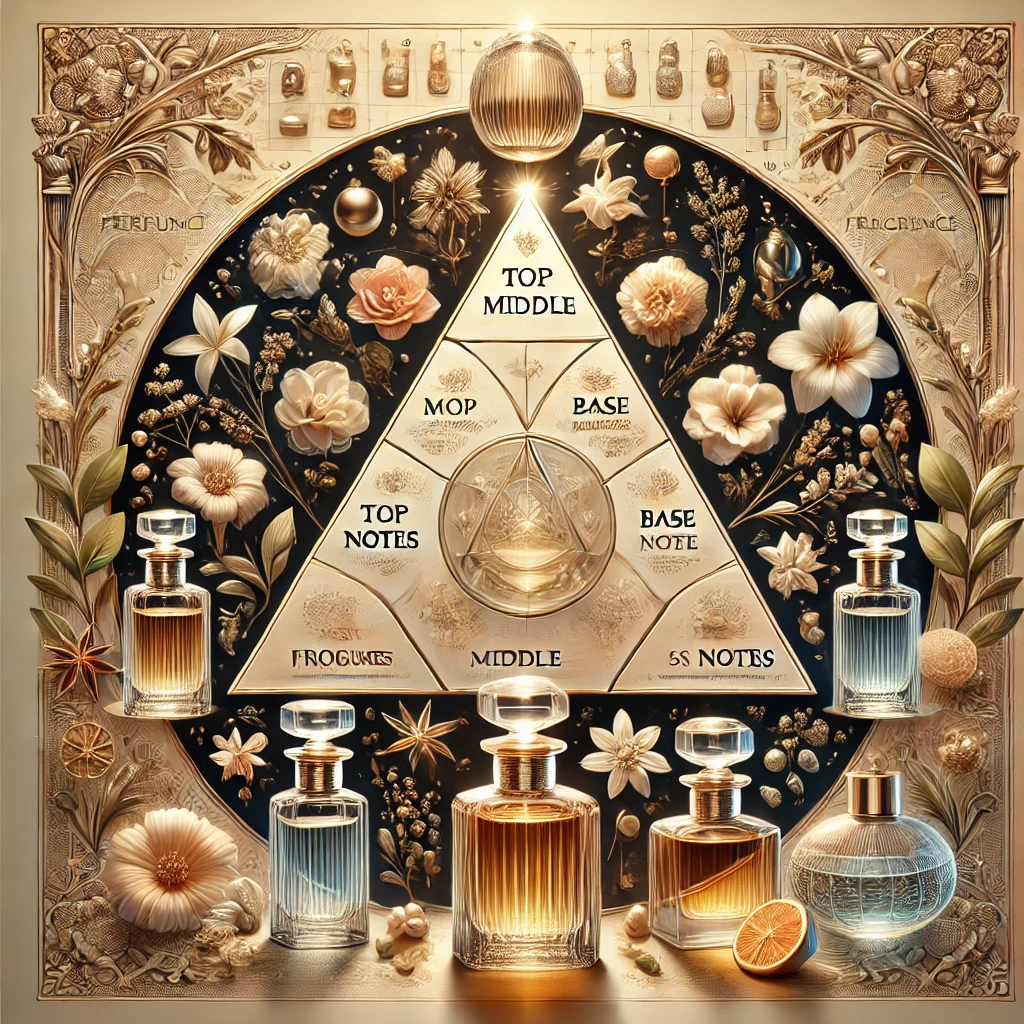Perfume is more than just a scent—it is an expression of personality, emotion, and artistry. From the delicate floral notes of a spring morning to the deep, mysterious aroma of oud and musk, fragrances have the power to evoke memories, enhance moods, and create lasting impressions.
This guide will take you through the intricate world of perfumes, helping you understand their composition, history, different Fragrance Notes, how to choose the right perfume, and how to make your scent last longer. Whether you are a novice exploring perfumes for the first time or a connoisseur looking to refine your knowledge, this guide has everything you need.
Chapter 1: The History of Perfume
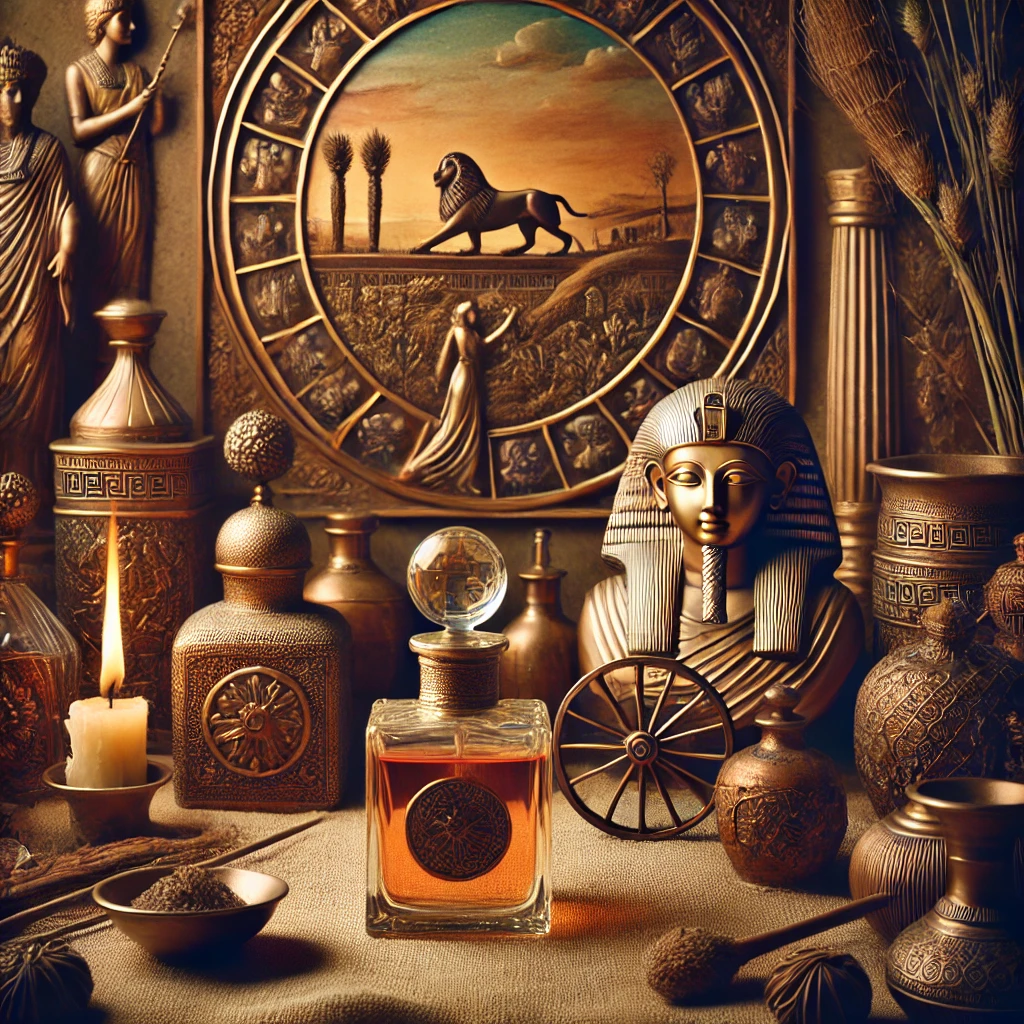
1.1 The Origins of Perfume
The art of perfumery dates back thousands of years. The earliest evidence of perfumes can be traced to Mesopotamia and ancient Egypt, where aromatic oils were used for religious rituals, beauty enhancement, and even medical purposes. The word “perfume” originates from the Latin “per fumum,” meaning “through smoke,” referring to the practice of burning aromatic substances.
1.2 Perfume in Ancient Civilizations
- Egypt: Perfumes were widely used in daily life, particularly among the elite. Egyptians developed complex scent-making techniques, using ingredients like frankincense, myrrh, and lotus.
- Greece & Rome: The Greeks and Romans refined perfume-making, using perfumes in baths, public spaces, and personal adornment.
- Middle Ages: During this period, perfumes were primarily used in the Islamic world, where alchemists developed distillation techniques still used today.
- Renaissance & Beyond: The French took perfumery to new heights, establishing the industry we recognize today.
Chapter 2: Understanding Perfume Composition
2.1 Fragrance Notes
Perfume consists of different layers known as fragrance notes:
- Top Notes: The first impression of a perfume, usually consisting of fresh, light scents like citrus, herbs, and fruity elements. These evaporate the fastest.
- Middle Notes (Heart Notes): The core of the fragrance, emerging after the top notes fade. These often include floral, spicy, or green scents.
- Base Notes: The foundation of the perfume, providing depth and longevity. These include rich and heavy scents like musk, vanilla, and woods.
2.2 Perfume Concentrations
The concentration of oils in a perfume determines its strength and longevity. Here are the most common types:
- Parfum (Extrait de Parfum): Highest concentration (20-40% fragrance oil). Long-lasting (8+ hours).
- Eau de Parfum (EDP): Strong but balanced (15-20% fragrance oil). Lasts 6-8 hours.
- Eau de Toilette (EDT): Lighter and fresher (5-15% fragrance oil). Lasts 3-6 hours.
- Eau de Cologne (EDC): Light and refreshing (2-5% fragrance oil). Lasts 2-4 hours.
- Eau Fraîche: The lightest form, containing only 1-3% fragrance oil.
Chapter 3: Fragrance Families
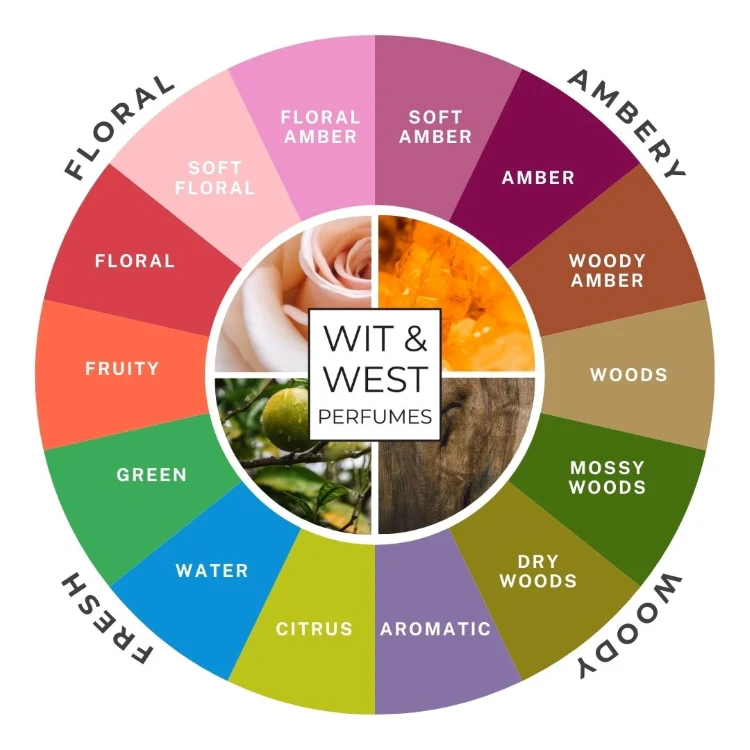
3.1 Floral Scents
Floral perfumes are among the most popular and versatile, featuring notes of flowers like rose, jasmine, and lily. They can be soft and romantic or bold and intoxicating.
3.2 Citrus Scents
Fresh and energizing, citrus-based perfumes often contain lemon, orange, bergamot, and grapefruit. They are perfect for daytime wear and warm climates.
3.3 Woody Scents
Woody fragrances offer depth and sophistication, featuring notes like sandalwood, cedarwood, and patchouli. These are commonly found in unisex and masculine scents.
3.4 Oriental Scents
Rich, warm, and sensual, oriental fragrances include vanilla, amber, and exotic spices. They are ideal for evening wear and colder seasons.
3.5 Fresh & Green Scents
These perfumes are inspired by nature and feature herbal, aquatic, and green notes, making them ideal for a crisp and clean feel.
3.6 Gourmand Scents
Gourmand fragrances include edible-inspired notes like chocolate, caramel, and coffee, offering a sweet and indulgent aroma.
Chapter 4: How to Choose the Perfect Perfume
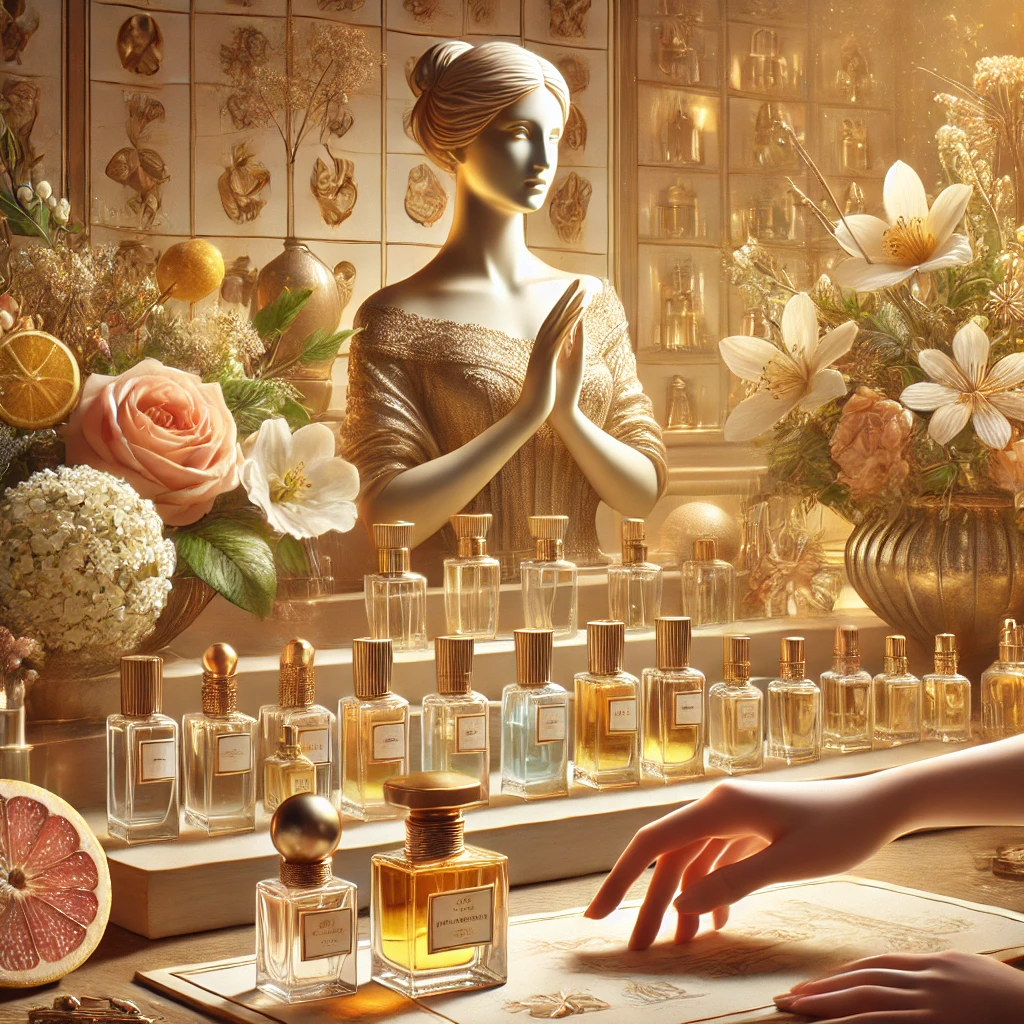
4.1 Understanding Your Preferences
Selecting a fragrance is a personal journey. Consider your personality, lifestyle, and preferences. Do you enjoy fresh, floral, spicy, or musky scents?
4.2 Testing a Perfume Properly
- Spray on pulse points: Apply fragrance to areas like the wrists, neck, and behind the ears.
- Avoid rubbing your wrists together: This can alter the scent’s composition.
- Wait for the full scent development: Perfumes evolve over time, so give them a few hours to reveal their true nature.
4.3 Choosing a Perfume for Different Occasions
- Everyday Wear: Light, fresh, and citrusy scents.
- Office/Professional Setting: Subtle florals or clean woody scents.
- Evening/Date Night: Bold, sensual oriental or gourmand fragrances.
- Special Occasions: Deep, long-lasting perfumes like oud or musk-based scents.
Chapter 5: Best Perfume Brands and Niche Fragrances
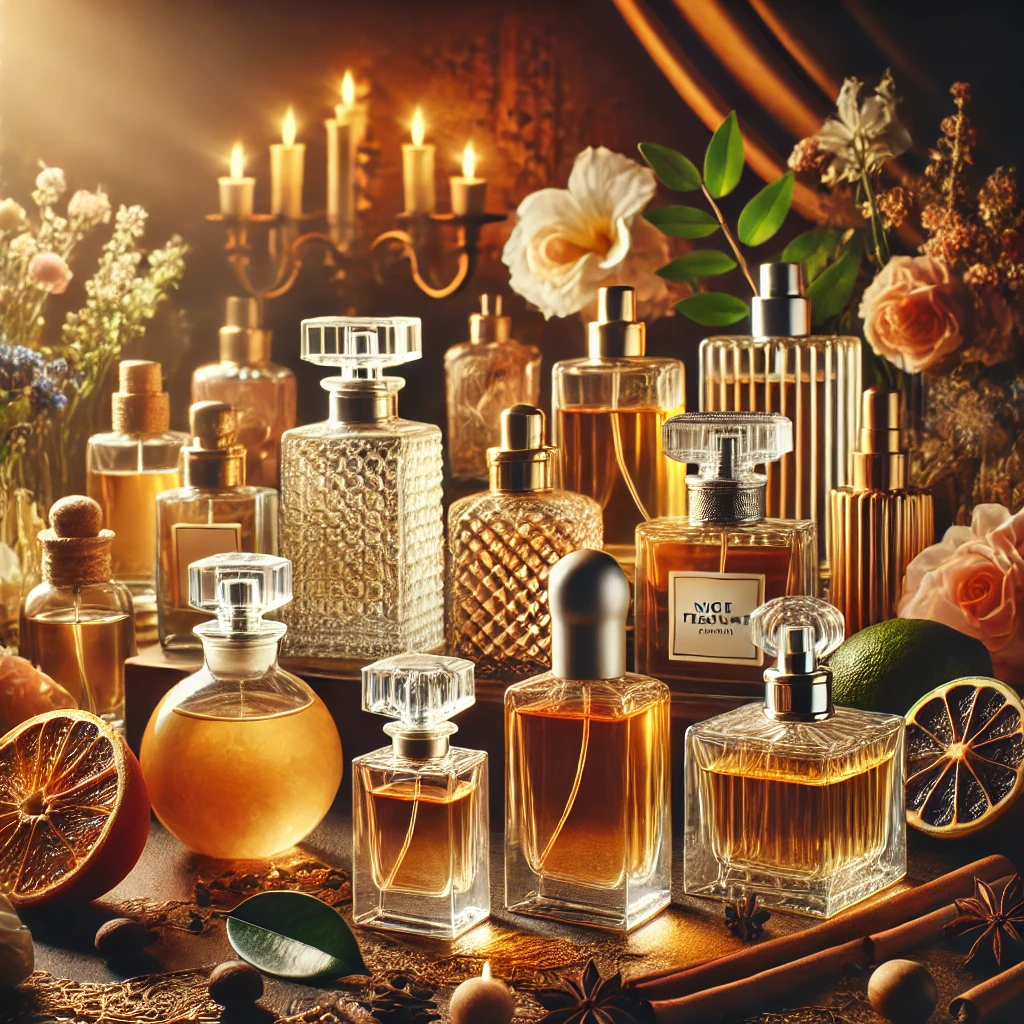
5.1 Top Designer Perfume Brands
Luxury designer brands dominate the perfume industry, offering timeless scents that have been popular for decades. Here are some of the best:
- Chanel – Known for classics like Chanel No. 5 and Coco Mademoiselle, Chanel offers timeless and elegant fragrances.
- Dior – With bestsellers like J’adore and Sauvage, Dior creates sophisticated and alluring perfumes.
- Gucci – Offering bold and unique scents like Gucci Bloom and Gucci Guilty.
- Tom Ford – Known for luxurious and intense fragrances like Black Orchid and Oud Wood.
- Yves Saint Laurent (YSL) – A mix of classic and modern scents, including Black Opium and La Nuit de L’Homme.
- Armani – Offers refined and sophisticated scents like Acqua di Giò and Armani Code.
- Versace – Bold, charismatic fragrances like Eros and Bright Crystal.
5.2 The Rise of Niche Fragrances
Niche perfumes are crafted with artistic vision, unique ingredients, and high-quality raw materials. They cater to those looking for exclusive and unusual scents.
- Creed – Famous for Aventus, a refined blend of fruity and woody notes.
- Jo Malone – Known for minimalist, fresh, and customizable scents.
- Le Labo – Handcrafted perfumes like Santal 33 have gained cult followings.
- Maison Francis Kurkdjian – Baccarat Rouge 540 is one of the most sought-after luxury niche perfumes.
- Byredo – Scandinavian-inspired fragrances with simple yet artistic compositions.
- Diptyque – Offers unique and luxurious French perfumes with natural inspirations.
- Amouage – An Omani brand offering rich, opulent, and Middle Eastern-inspired scents.
5.3 What Makes Niche Perfumes Special?
- Higher concentration of essential oils – Lasts longer than mass-produced perfumes.
- Unique and rare ingredients – Often feature natural, exotic raw materials.
- Limited production – Offers exclusivity and a more personalized experience.
- Artistic and experimental compositions – Designed for those who appreciate uniqueness.
Conclusion
Understanding perfume is a journey that blends science, art, and personal preference. By learning about fragrance notes, perfume concentrations, and different scent families, you can confidently choose a perfume that complements your personality and lifestyle.
